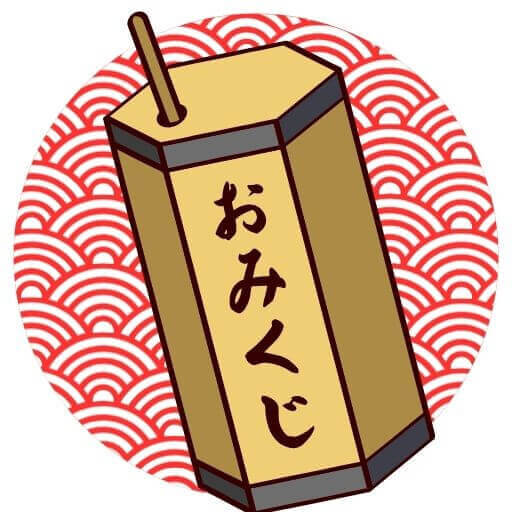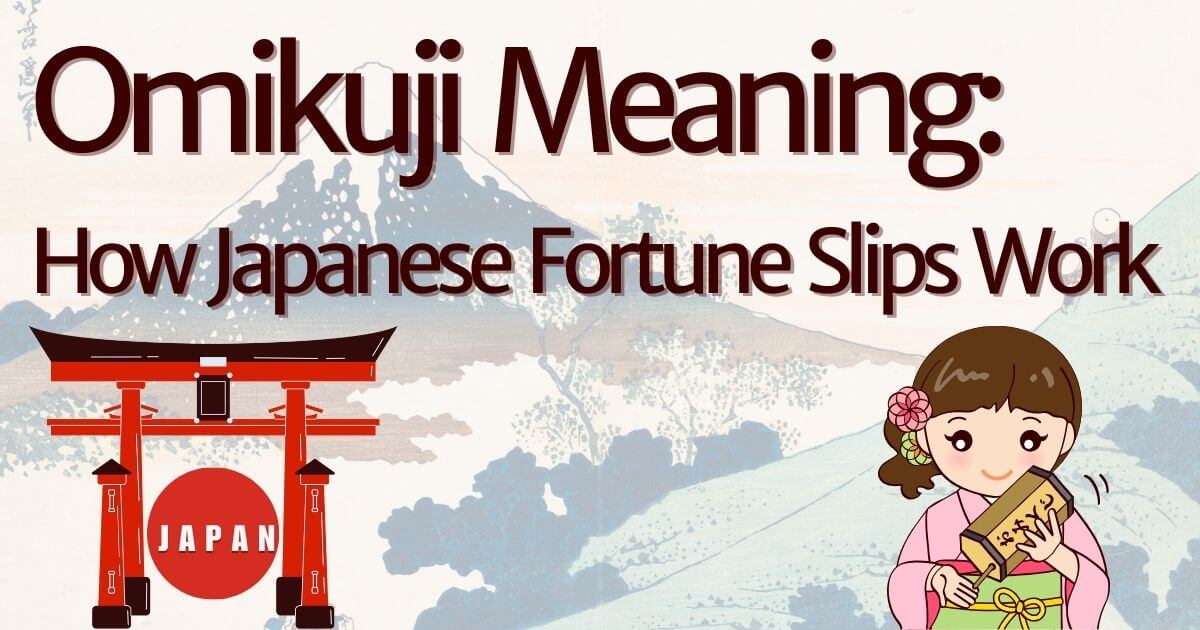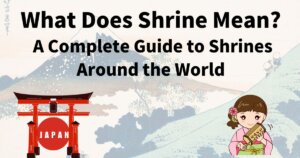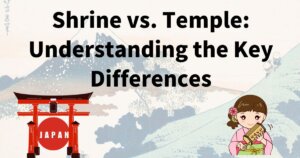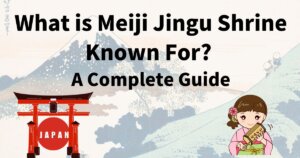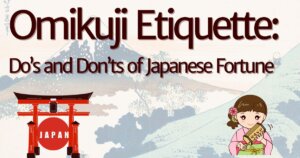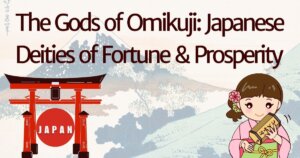“Key Takeaways from This Article”
📍 What does Omikuji mean and how does it work?
📍 Different fortune levels in Omikuji and what they represent
📍 How to properly use and interpret Omikuji fortunes
📍 Modern variations of Omikuji, including digital versions
Omikuji Meaning & Japan’s Fortune-Telling Tradition
(おみくじの意味とは?日本の占い文化を探る)
The Definition of Omikuji: What Does it Represent?
Omikuji (おみくじ) are fortune-telling slips found at Shinto shrines and Buddhist temples in Japan. They serve as a form of spiritual guidance, offering insight into different aspects of life such as health, love, career, and travel.
How Omikuji Reflects Japanese Spirituality
Omikuji embodies key principles of Japanese spirituality, including:
- Shinto beliefs: The idea that natural spirits (kami) influence human fortune.
- Buddhist teachings: The concept of karma and how one’s actions shape their future.
- Personal responsibility: Omikuji provides advice, but it is up to the individual to act upon it.
Why Do People Draw Omikuji?
People draw Omikuji for various reasons, including:
- New Year’s tradition: Many people pull Omikuji at the beginning of the year for guidance.
- Before major life events: Such as starting a new job, relationship, or school year.
- Seeking spiritual reassurance: To gain wisdom and encouragement.
What Do the Different Omikuji Fortunes Mean?
Omikuji fortunes are ranked from best to worst. The most common rankings include:
- Daikichi (大吉): Great blessing, the best fortune.
- Kichi (吉): Good fortune, generally positive.
- Shokichi (小吉): Small blessing, moderate luck.
- Kyo (凶): Bad fortune, warning of difficulties. Some variations include Chukichi (中吉) for moderate luck and Daikyo (大凶) for extreme misfortune.
Key Sections of an Omikuji Slip
An Omikuji contains multiple sections, each providing detailed guidance:
- Overall fortune: The general luck ranking (e.g., Daikichi, Kyo).
- Specific advice: Predictions for love, career, health, and travel.
- Ancient proverbs or poems: Traditional wisdom offering deeper meaning.
How Omikuji Works: The Ritual and Interpretation
How to Draw and Interpret an Omikuji
- Approach the shrine or temple: Offer a small donation.
- Shake the Omikuji box: A numbered stick falls out.
- Receive the corresponding fortune slip: A priest or machine gives you the Omikuji.
- Interpret the fortune: Read each section carefully and reflect on its meaning.
Should You Keep or Tie Your Omikuji?
- Good fortunes: People often keep them as lucky charms.
- Bad fortunes: Traditionally tied to a tree or rack at the shrine to dispel bad luck.
How to React to a Bad Omikuji?
- Do not panic: Omikuji is guidance, not an unchangeable fate.
- Use it as motivation: Take it as advice to improve your life.
- Seek blessings: Some people visit shrines again to pray for better luck.
Key Takeaways: What Omikuji Reveals About Your Fortune
- Digital Omikuji: Available via vending machines or mobile apps.
- Custom Omikuji: Themed versions for love, career, or specific wishes.
- Omikuji are Japanese fortune slips found at shrines and temples.
- They serve as spiritual guidance, not absolute fate.
- The tradition dates back to the Heian period.
- Omikuji ranks include Daikichi (great luck) to Kyo (bad luck).
- They offer insights into love, career, health, and travel.
- People draw Omikuji for New Year’s luck or before big life changes.
- Bad fortunes can be tied at the shrine to ward off misfortune.
- Digital Omikuji are becoming more popular.
